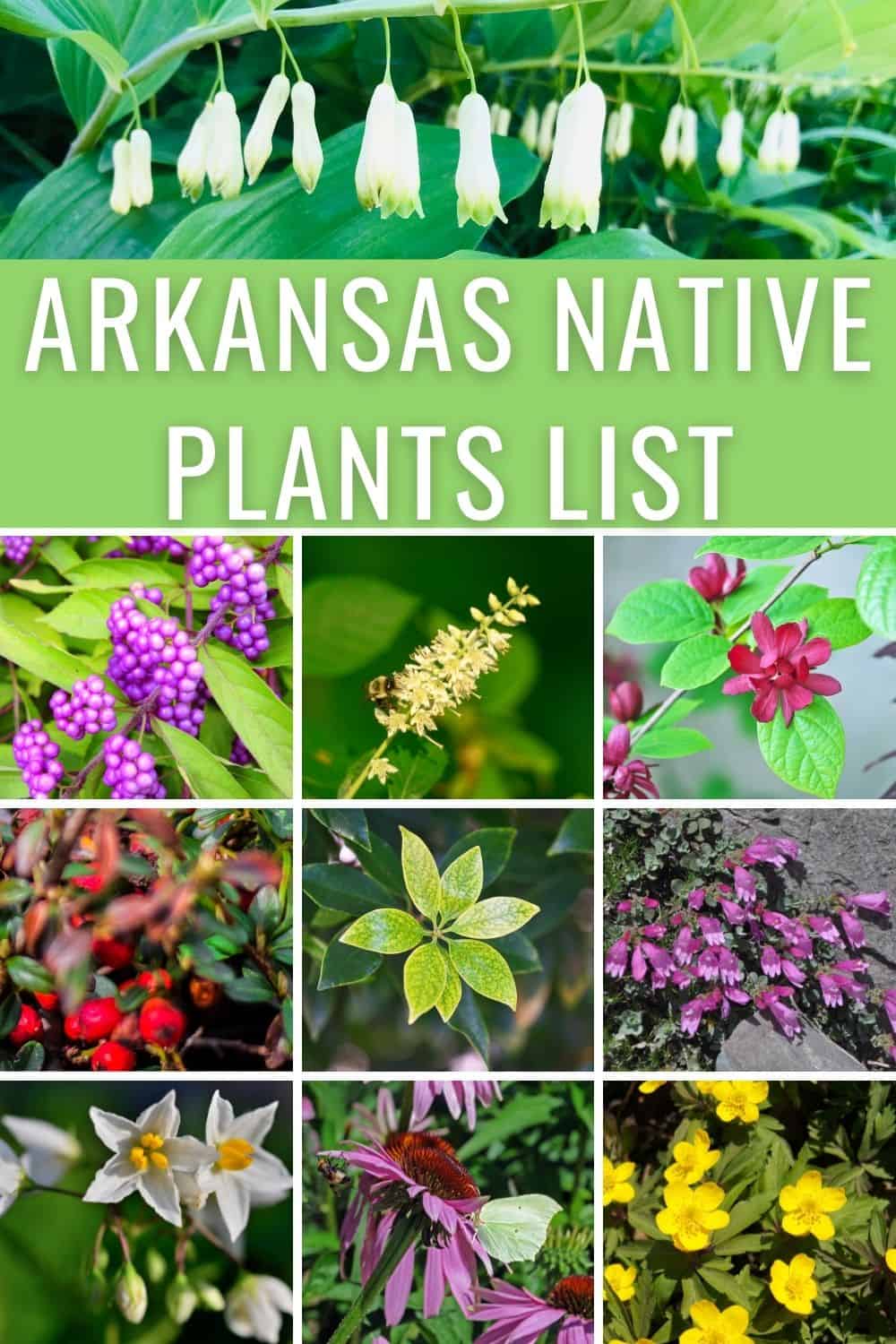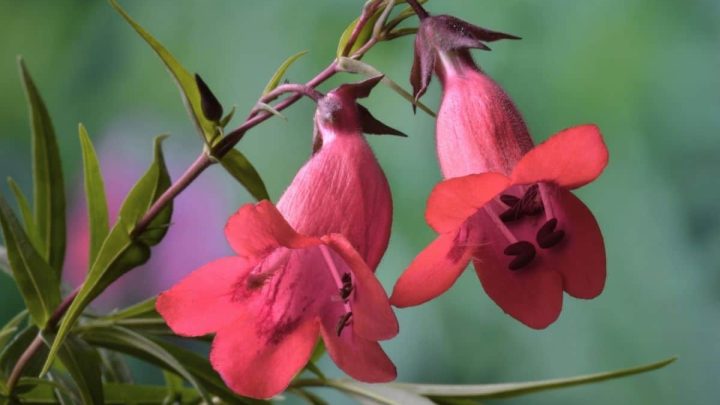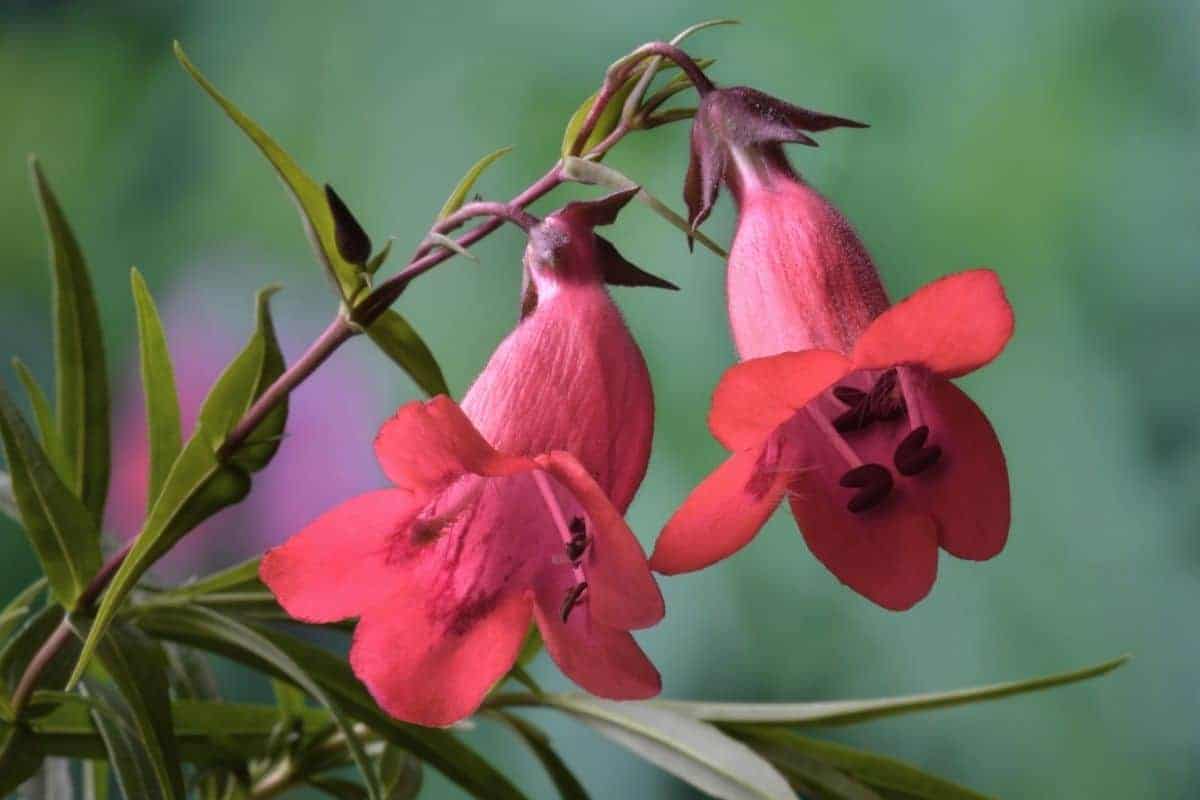When you want to get the most out of your lawn landscaping, you should choose native plants and shrubs because you already know they do well in your climate. Some people are under the false impression that native plants are just weeds and that they need more exotic choices to really make their landscape pop. Allow this Arkansas native plants list to be your guide in choosing the best plants and shrubs for your landscaping needs.
Arkansas Native Plants List
Native plants will do best in your Arkansas climate, and they will be the easiest to grow and maintain over time. When you want plants and shrubs that will not only survive but also thrive, consider these native picks. They are all found naturally in the area and will do well when used in your natural landscaping.
Learn more about native plants from all over the US
1. Beautyberry – (aallicarpa americana)
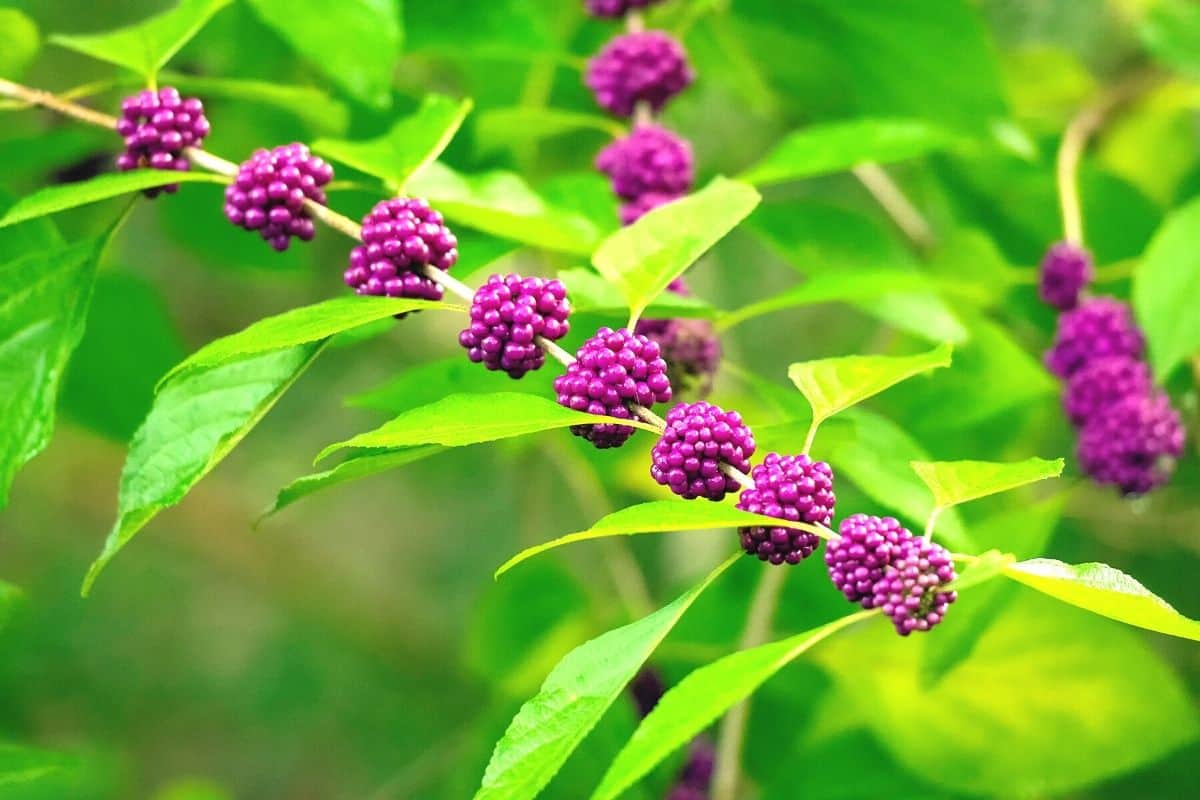
Also called American Beautyberry, French-mulberry, and beautybush, this is a shrub from the mint family, previously in the Vervain family. It grows large, is deciduous, and is found natively all across the Southeastern U.S. Not only is it found in Arkansas, but also in Texas, Oklahoma, Southern Missouri, and Southwestern Kentucky. In Arkansas, it can be found all over the state but is found less frequently in the upper Ozark areas.
It does well in a variety of soils and in partial shade or full sun, meaning it works well in a lot of landscapes. Overall plant height can reach seven feet and it can grow very wide when branches are allowed to grow fully. It can live for about 15 years or more.
2. Sweetshrub (calycanthus)
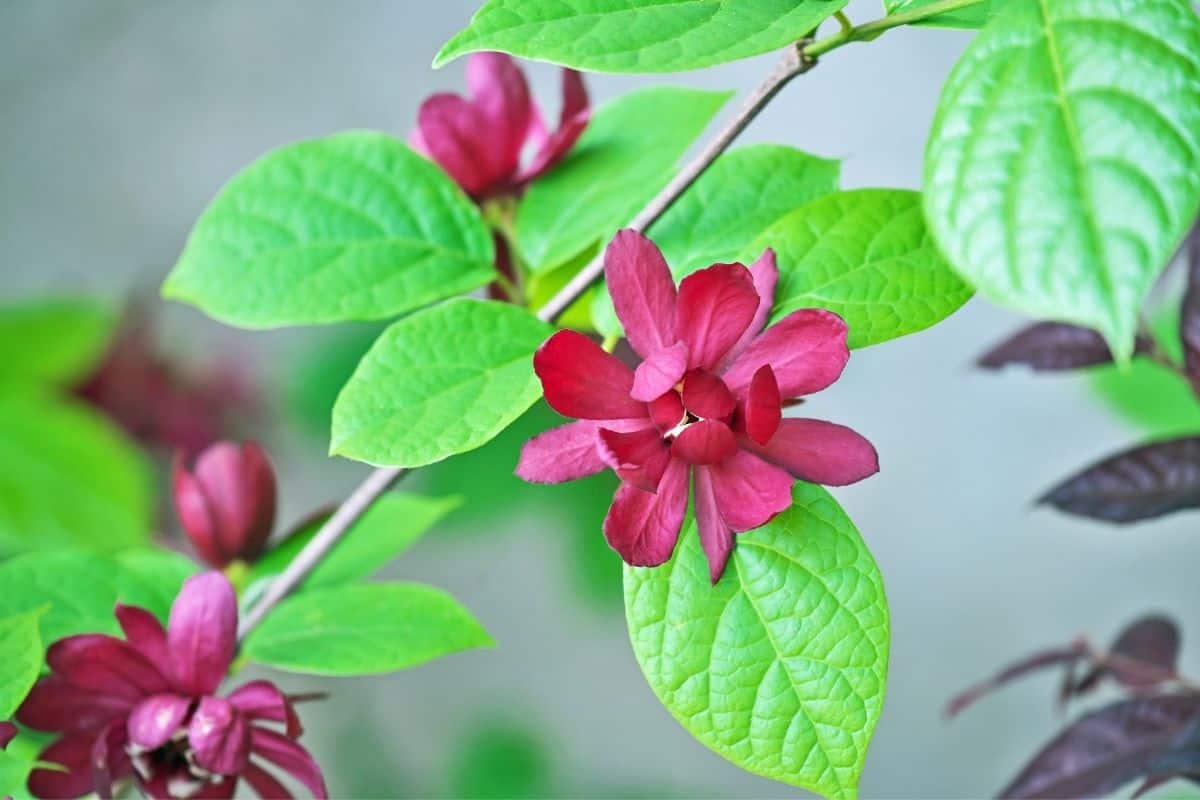
Calycanthus is also called sweet shrub or Carolina Allspice. It can grow about 8 feet high and have as much as a 9-foot spread. It does well in full sunlight and in partial shade and has a hardiness zone rating of 4b. This large shrub is most well known for its spicy fragrance which can be very strong (if you like good smelling flowers, take a look at our fragrant perennial flowers list). The scent comes from the purplish flowers that grow on it.
Sweetshrub can look and smell great in your landscaping. Consider planting it alongside a footpath or a walkway where people can experience it as they walk past. It can do well in landscaping as a mass planting or for general garden use. In general, deer and other animals don’t care for it and will leave it alone. It has few downsides and will make a great choice in almost any landscape.
3. Yaupon holly (ilex vomitoria)
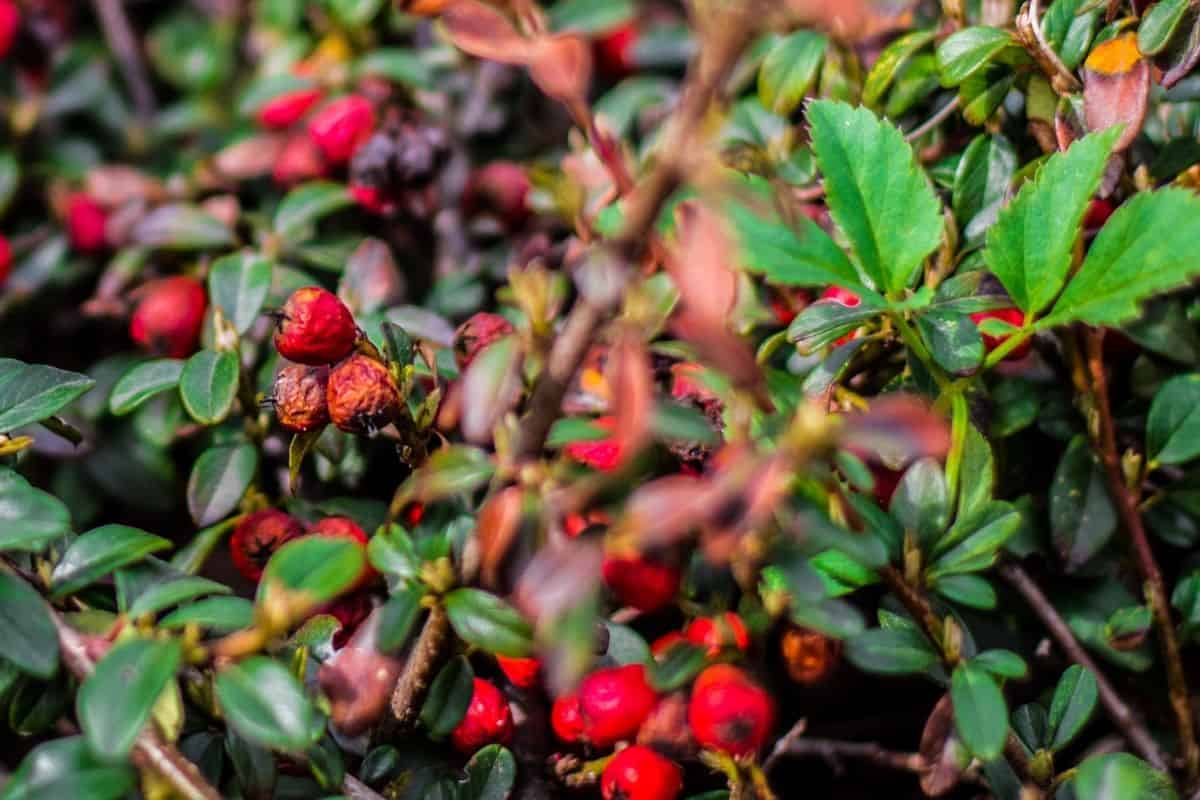
Yaupon holly is a small evergreen that normally reaches about 15-to-20 feet in height. It has gray trunks and many branches of twig-like limbs that will grow off it. The leaves are bright green in the summer but can turn grayish in the winter. They don’t have prickles like some hollies.
You can use Yaupon holly to hedge your yard, to separate certain parts of your garden, or for lining a path or covering the front of your house. There are very few plants that offer the same variety in landscaping as holly. Like other hollies, the females do produce red berries in the winter months.
4. Florida anise (illicium)
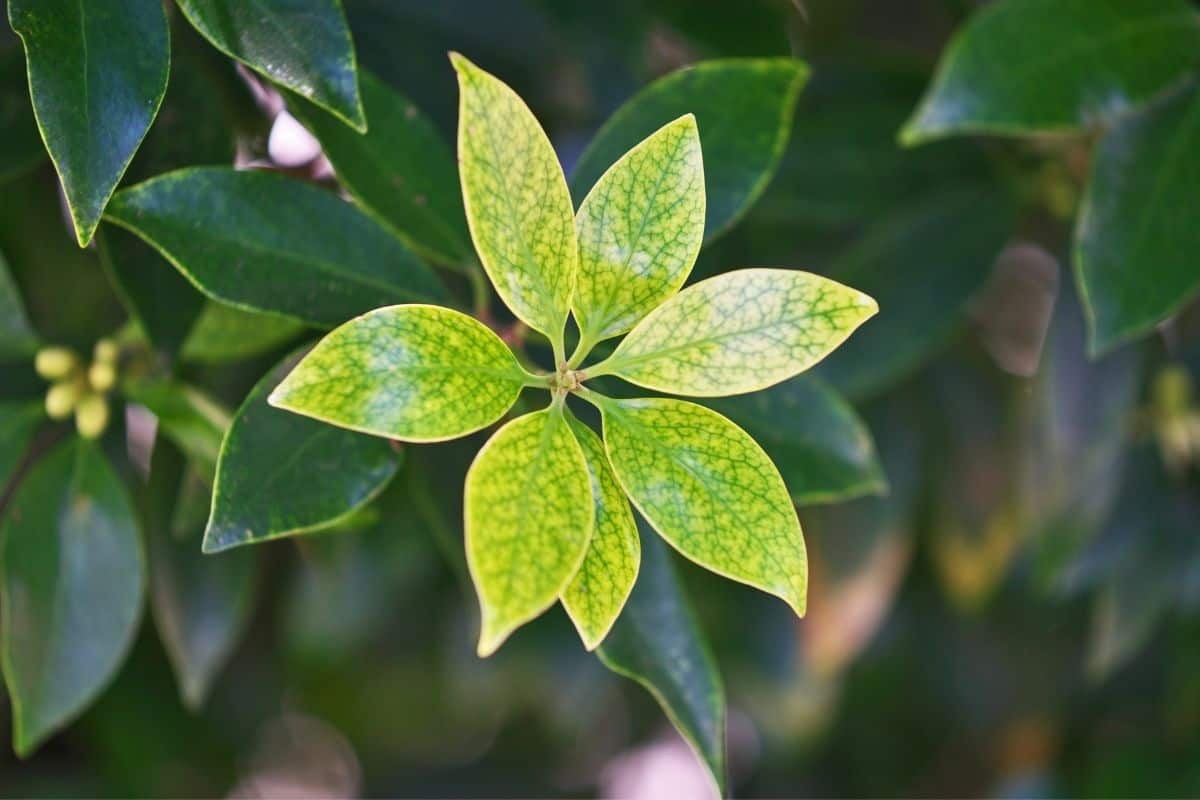
Florida anise is another popular, native choice to Arkansas. This is a common Southern landscaping plant that can grow from 10 to 12 feet tall and 6 to 8 feet wide. It’s an evergreen shrub and can be used in your landscape to create a hedge, lining property zones, and much more.
It has leaves that are from 4-5 inches long, feel and look waxy, and when crushed, send off a strong aroma. In the shade, the leaves will be a rich green but when in too much sunlight, they can turn yellow. Part-shade is a good choice for your Florida anise.
5. Summersweet (clethra alnifolia)
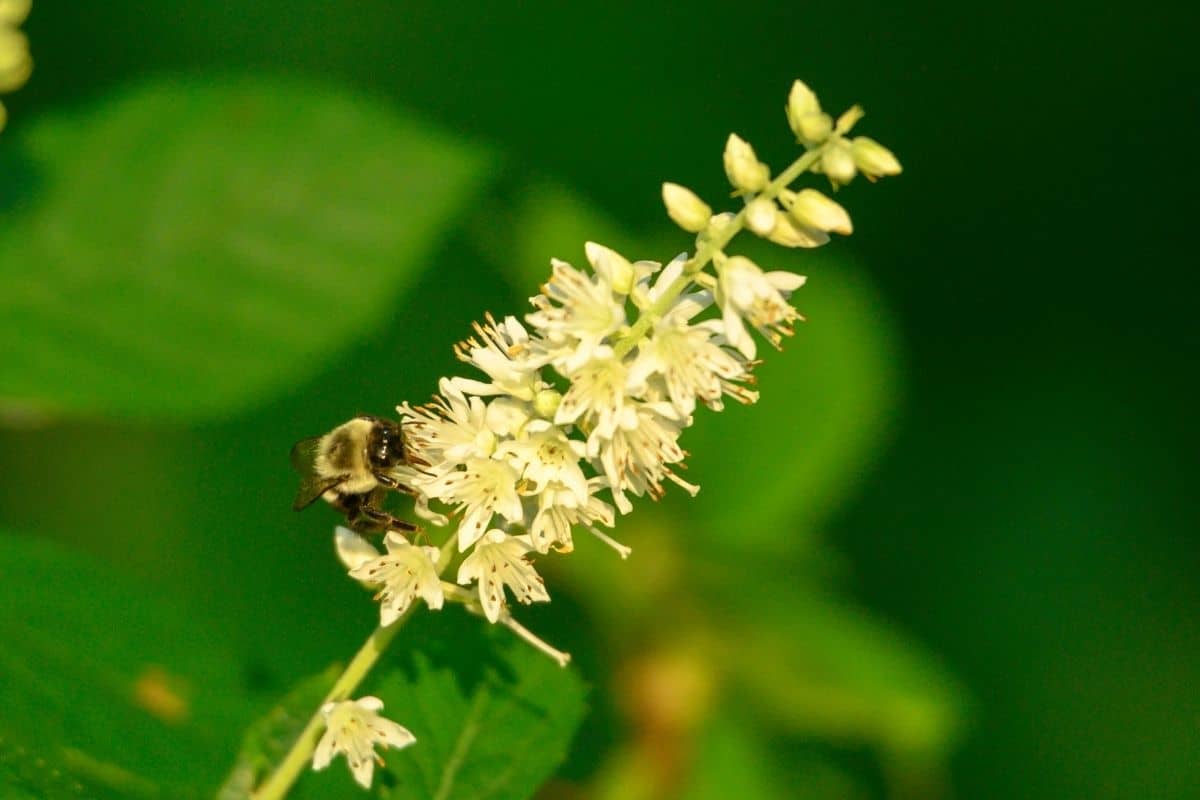
With summersweet in your landscape, you can experience its beauty in all four seasons. It grows from 3-5 feet high and 5-8 feet in width, making it a small shrub and good for a variety of uses in the landscape. It does well in full sun, or partial sun/shade. It has a hardiness zone of 4 and it likes acid soil that is moist and well-drained.
A wide variety of birds and butterflies are also attracted to summersweet so this is a good choice if you want to attract pollinators to your lawn or garden.
It’s native to the Eastern United States and will give you different looks, based on the time of year. It has beautiful green leaves in the spring, white or pink spiky flowers in the summer (that smell sweet), golden yellow leaves in the fall, and unique dried seed capsules in the winter months. It will make a nice choice for any Arkansas lawn or garden.
6. Native azaleas
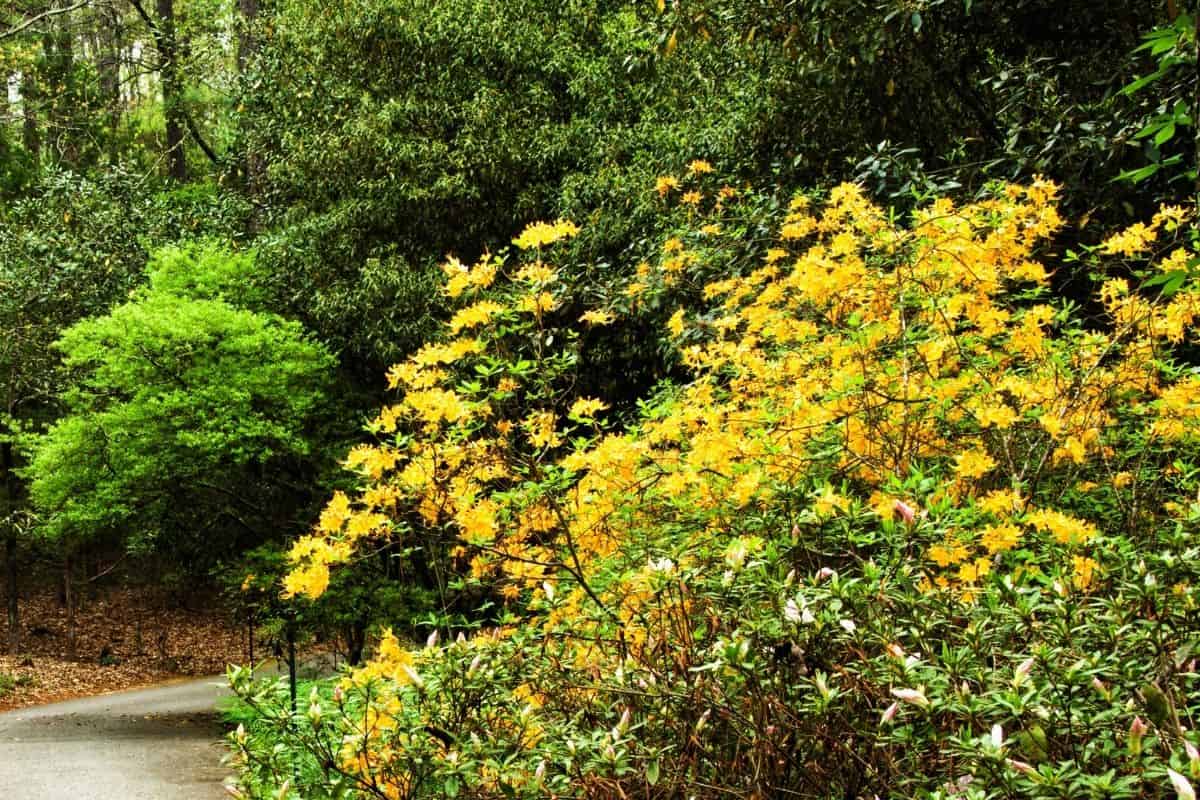
There are also many native azaleas for you to consider. The most common is Rhododendron prinophyllum, but there are at least a dozen others native to the Arkansas region of North America. Azaleas could be considered the state shrub of Arkansas, they are so common.
There are thousands of varieties and they come in many different colors, sizes, and more. There is an azalea for most any landscaping need you could have.
Dwarf varieties can be as small as 10-12 inches, for example. And tall varieties can be as big as 12-15 feet high. It all comes down to choosing the right azalea for your needs.
7. Solomon’s seal (polygonatum biflorum)
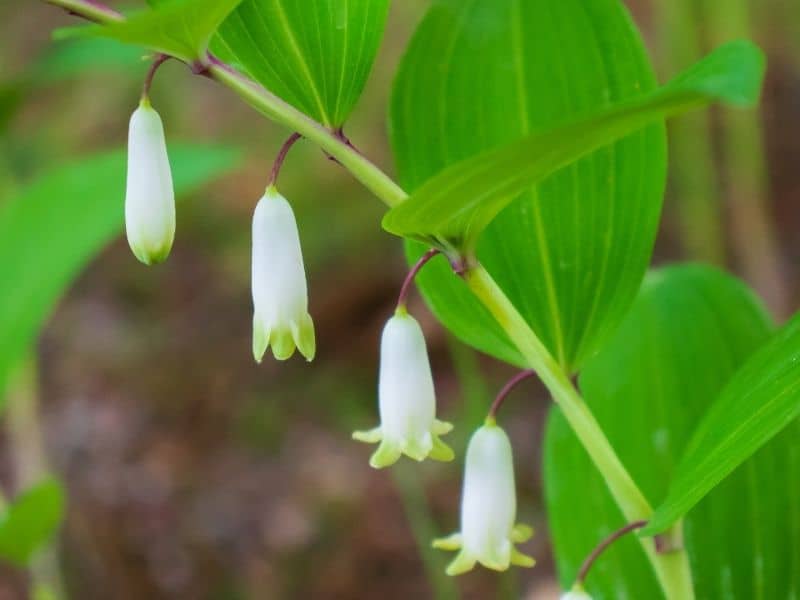
Next on the list is Solomon’s seal. We like this plant because of its beauty and versatility. It is a member of the lily family and has zig-zag arching stalks that are usually 1-5 feet long. Then there are tubular, white flowers that hand down in pairs, giving it a very unique look.
Solomon’s seal can do well in hardiness zones of 3-7 and will suit most Arkansas climates throughout the state. They prefer moist, well-draining rich soil, but they are pretty drought resistant. They need more water when first planted until it is well established in growth. Caring for them is easy – you just need to keep the soil moist.
8. Purple coneflower (echinacea pallida)
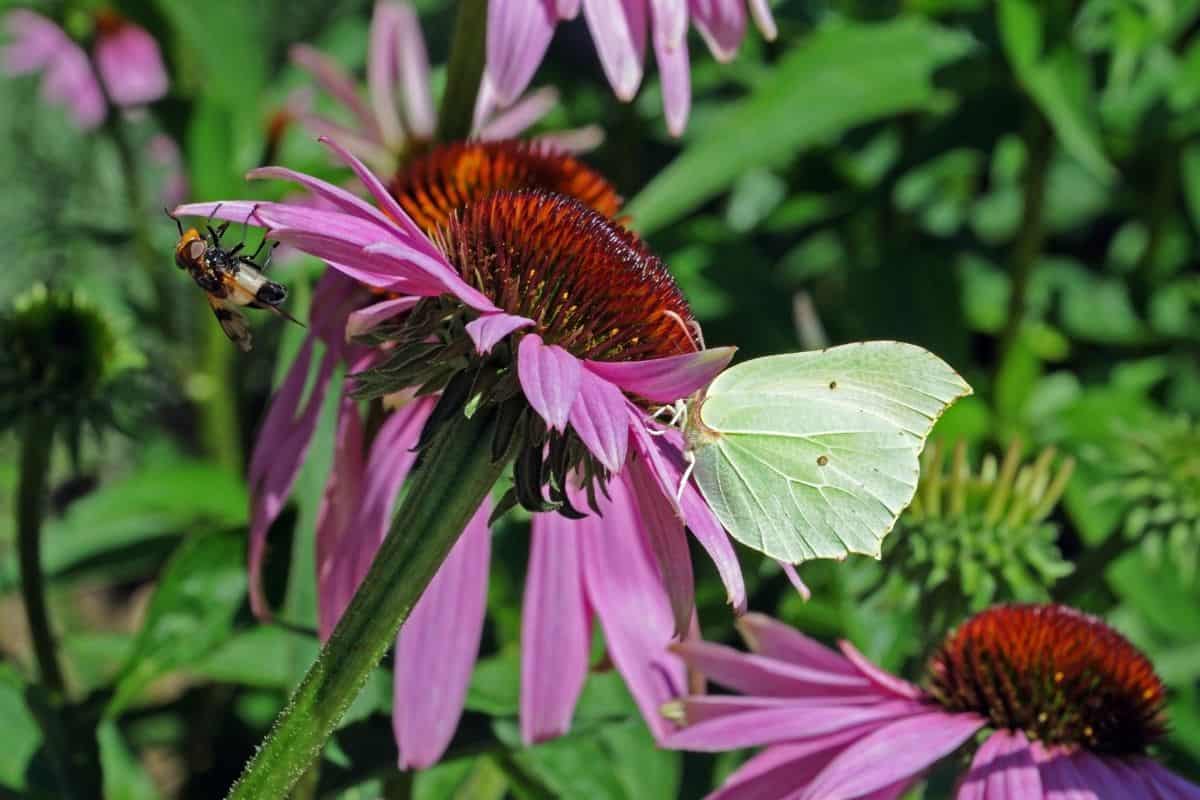
Purple coneflower is native to Arkansas and does well in nearly any landscaping. It has stout stems with pale purple and sometimes white flowers. They have a spiny cone-shaped center, and they bloom from May to July, usually. Found thriving in hardiness zones 3-9, it’s a relative to the daisy family and a garden classic for Arkansas natives.
Purple coneflower is a perennial that does well in full sun and also can withstand drought. Feel confident putting it in sun-facing parts of your landscaping. It can tolerate dry soil and direct sunlight just fine. It is strongly tap-rooted and will also attract butterflies and bees to your lawn or garden.
9. Arkansas beardtongue (Penstemon arkansanus)
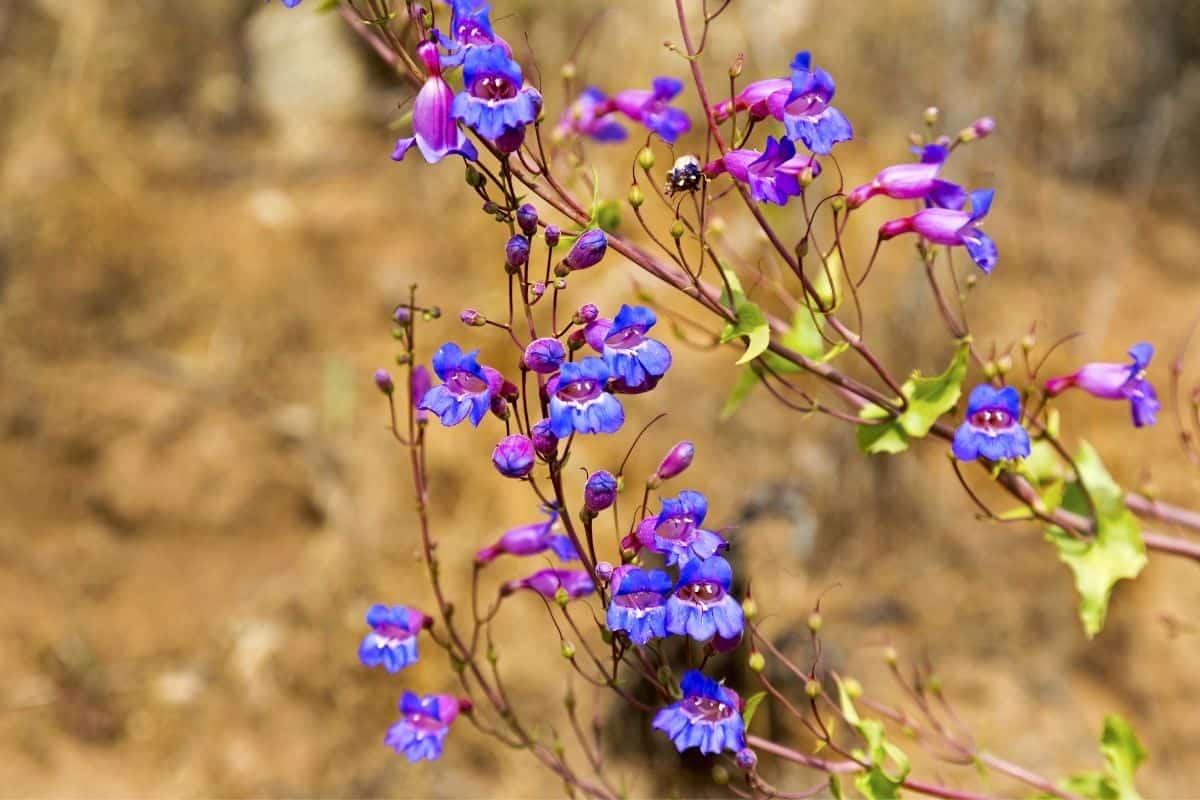
The Arkansas beardtongue is an herbaceous perennial native to the area. It is now classified as part of the plantain family but was formerly classified as part of the snapdragon family. It grows about 2 feet in height when it is flowering and has dark olive leaves that are about four inches long. The stems will often have a purplish color to them.
Beardtongue can bloom from April to early June and is native throughout the Ozarks and most of the state, but less common in the Delta region and the Gulf coastal areas.
While it is common to the natural habitat of the state, it is not common in the nursery trade and therefore, not as common in gardens unless someone preserved this part of the natural landscape. However, it is still a great choice if you want to add it to your landscape.
10. Early buttercup (Ranunculus fascicularis)
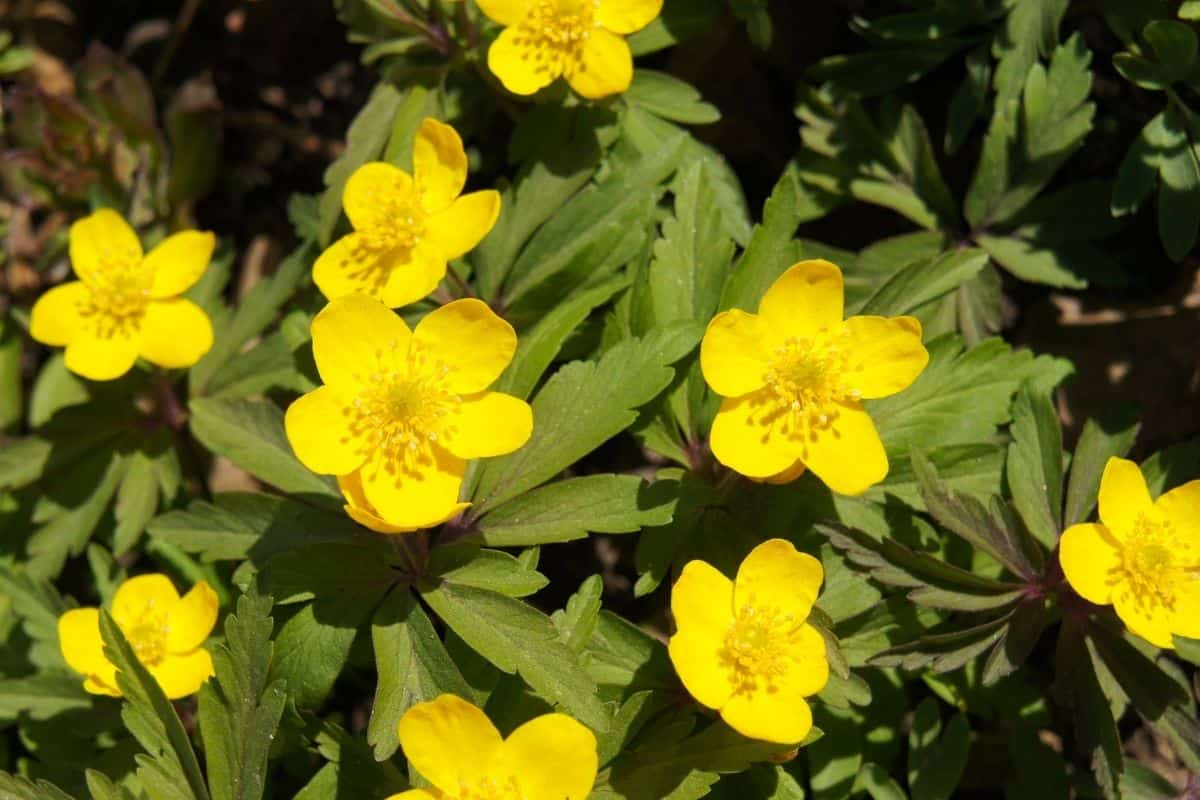
When you have early buttercup in your landscape, there are many benefits. Early buttercup is one of the first of many varieties of buttercups in Arkansas to bloom flowers. They begin in the early spring (usually around mid-March).
Buttercup blooms look pretty and smell fantastic and may also attract bees, butterflies, or certain birds to your property. They are yellow in color and like full sun but can also do well in partial shade. They prefer well-drained soils and will do well in garden beds, property line borders, or even in front of fences.
11. Carolina horse nettle (Solanum carolinense)
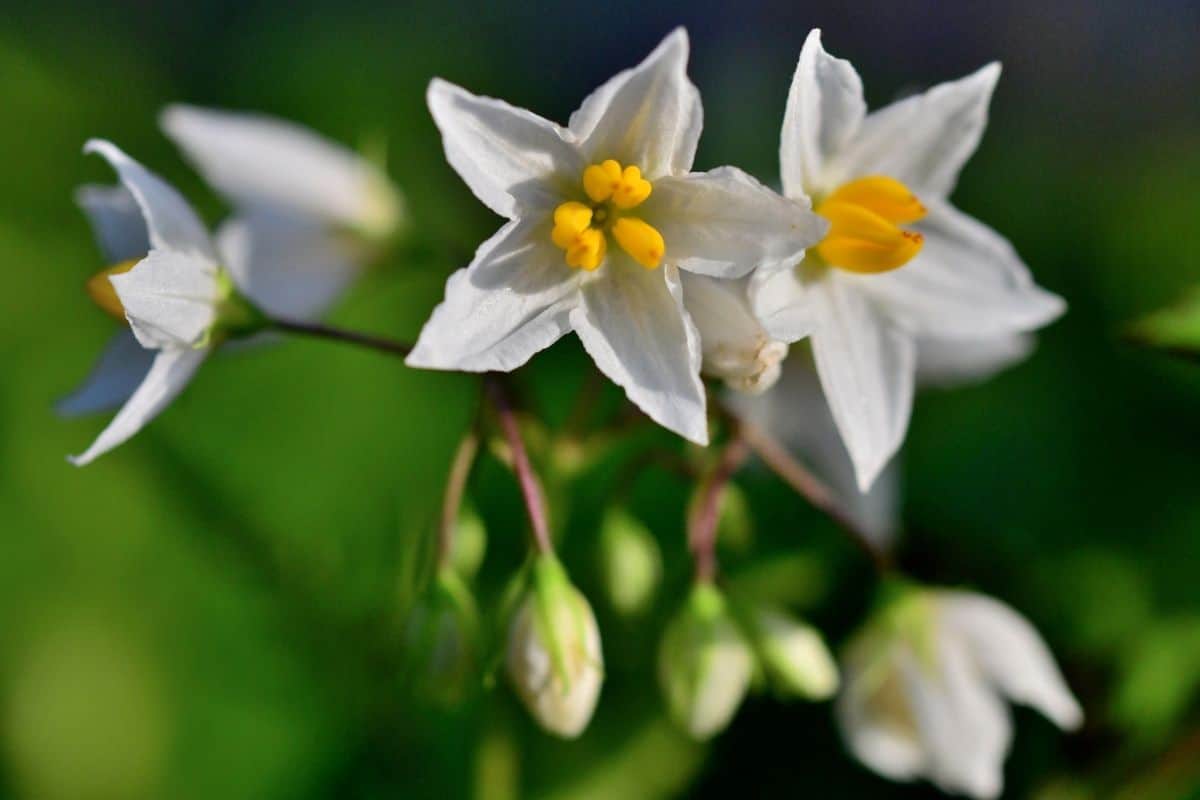
Don’t let the name fool you; Carolina horse nettle is also native to Arkansas. This is a toxic perennial in the nightshade family that has attractive flowers and also blooms fruit (the berries usually show in late August). It’s not actually a true nettle, despite its name.
It is sometimes also known as Bull nettle, Radical Weed, Apple of Sodom and simply horse nettle. The leaves smell like potatoes when they are crushed. They prefer full sun but can also tolerate partial shade. They can do well in wet and dry conditions and tolerate a wide range of soil conditions. Bumblebees especially like to pollinate the flowers of the horse nettle.
12. Lady fern (Athyrium filix-femina)
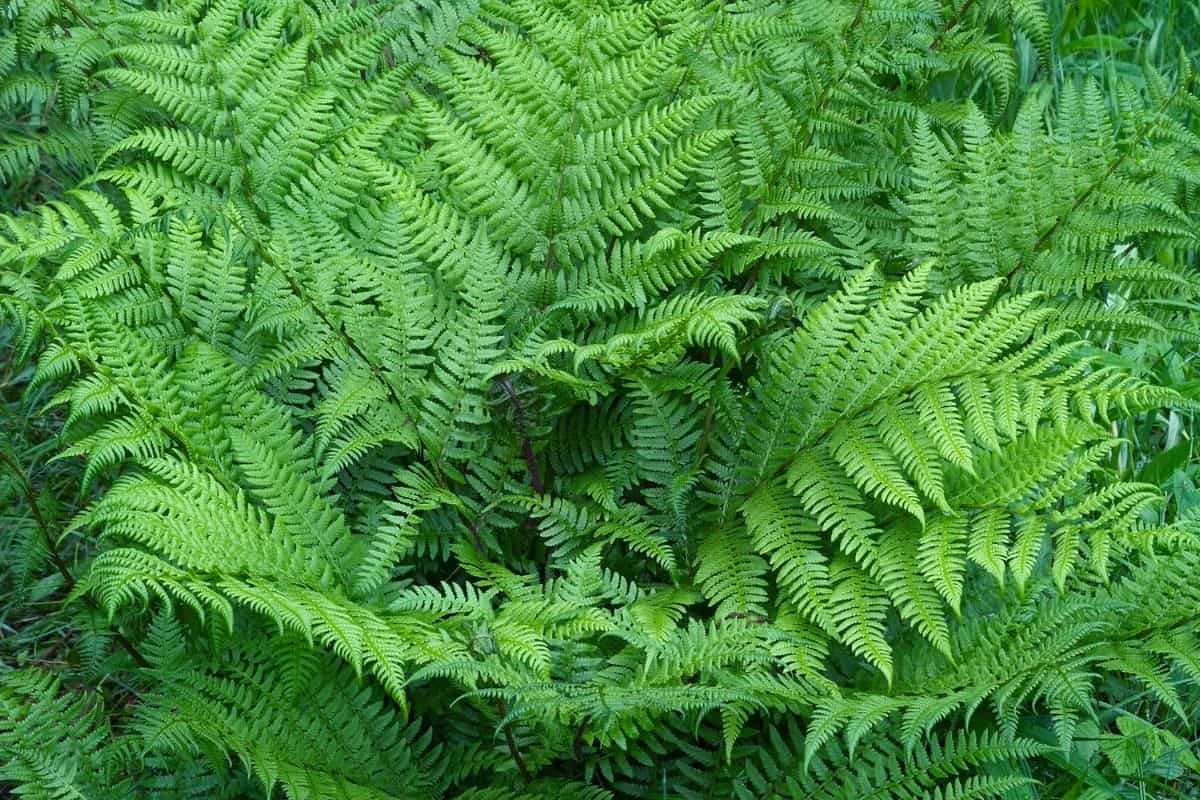
The lady fern is another good choice for your native Arkansas landscaping. There are also other native ferns such as hairy lipfern, sensitive fern, royal fern, resurrection fern, and wooly lip fern, just to name a few.
In the wild, lady fern grows in moist woods, swamps, meadows, and along rivers or streams. It is a very low-maintenance plant, which is one reason you see it cultivated and added to landscapes. The leaves are bright green and have a lace-like appearance. One single frond can measure from 1 foot in width and 3 feet in length. They are easy to grow and maintain and look nice in your garden or lawn.
Arkansas native plants list FAQ
Here are some commonly asked questions about this Arkansas native plants list that may help you when choosing the right plants and shrubs for your landscaping.
How do you recognize native plants to Arkansas?
If you’re new, a good starting point is to get a guidebook or read a website dedicated to native Arkansas plants. Our list is a good beginner’s guide but there are many more. If you want to be able to identify them on sight, you’ll also want to view a lot of pictures.
How do you choose the right native plants or shrubs for your landscape?
It all begins with understanding the soil conditions in your region and the sunlight that hits the particular area you plan to plant. From there, you can choose the best native plants to thrive in your area and to achieve the design and look you are going for.
Where can I buy native Arkansas plants?
Local nurseries should have native Arkansas plants for sale but you can also see the list from the Arkansas Native Plant Society to find nurseries with native plants.
